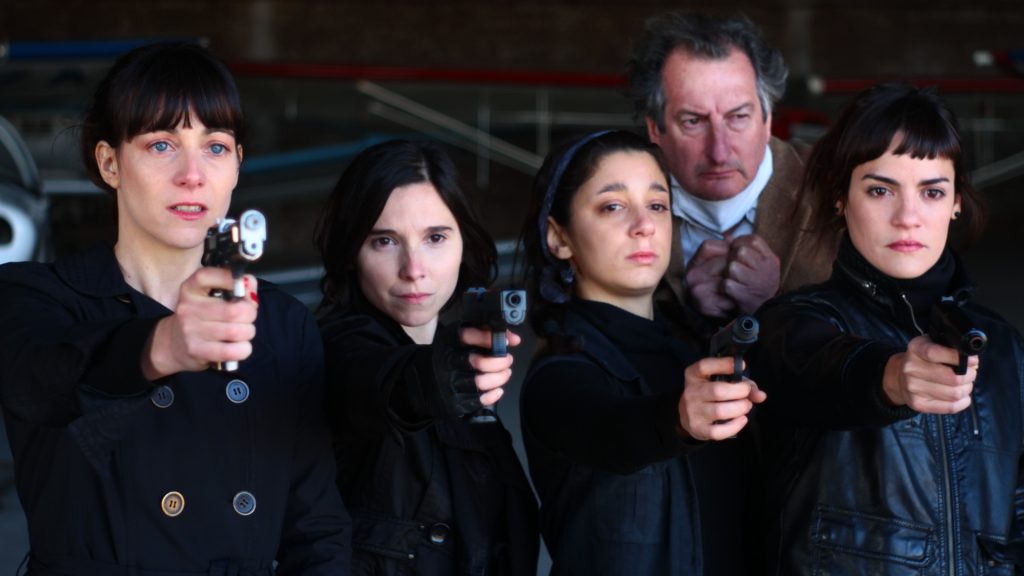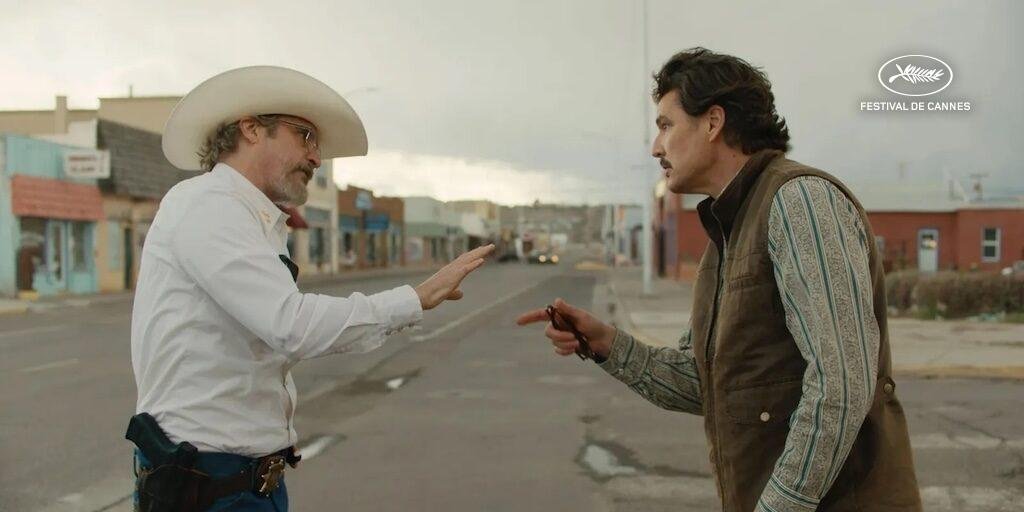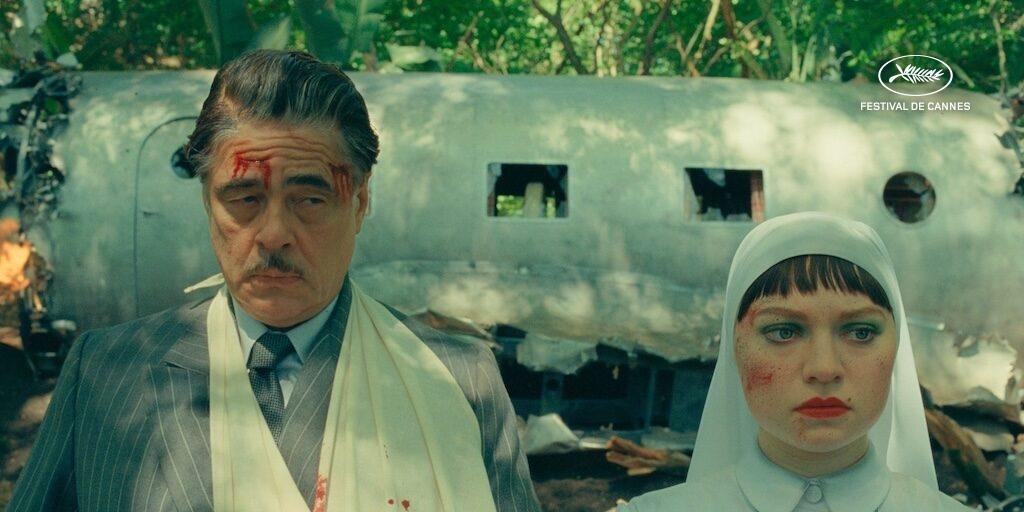FOURTEEN HOURS DON’T MAKE A RIVER
In Escape and Other Essays, César Aira includes one essay on Salvador Dalí where he broaches the difference between talent and genius. Aira says: “Talent does what it can. The talented man can do what he sets out to do, and if he has a lot of or tremendous talent, he can do everything or almost everything; this refers to what he wants to do, that is to say, to make reality, to translate into reality, what he has thought or imagined… On the other hand, the genius does only what he can: he is obliged to do what his genius tells him, because he is not a mere superlative of ability or talent: he is possessed by a superhuman force that dominates him… With that submission he pays the admiration, the devotion with which the universal consensus sees him… He is subject to his genius.”
After reading Aira and watching La flor, I thought that Mariano Llinás was a genius. Indeed, he is seized by a supernatural force that makes him do things differently from the other filmmakers: fourteen-hour long films, stories in which everything is told in voiceover, voices dubbed into foreign languages, pantomimes that recreate famous works, illustrated apocryphal texts in images, a sequence of titles which lasts more than half an hour, among other inventions that could be considered simple extravagances if Llinás were not a genius in the airean sense of being possessed by an uncontrollable force.
Regarding the talent for cinema, Llinás does not lack it, although he does not have it in abundance. One would say that his natural vein is literature, although there is a great deal of misunderstanding on that point. In principle because his talent is not manifested in novels, poetry or essays but in scripts, speeches and texts of his own films and those of others (there is, for example, a noteworthy one about the painter Cándido López in Le ciel du centaure, by Hugo Santiago). Llinás has a great skill to imitate others’ registers, from that Borgean tone that he has abused a bit, to the Wellesian statement of the newscast that opens Citizen Kane with that raucous and somewhat parodic voice. In any case, Llinás’ capacity for work allowed him to progress in the craftwork of cinema to fill in the gaps that his hyperbolic genius proposes to turn into a film. I remember, for example, that Balnearios, his first film, was originally proposed as a detailed taxonomy of all kinds of spas in Argentina; then he reduced it to manageable proportions and added passages of fiction. The same thing happens with La flor: the project of bringing together small class B genre stories in a single film rarefied by the violation of some conventions (the absence of an ending, for example) requires superlative talent so that the whole has the freshness and creativity needed to stand on its own.
But the stories that make up the fourteen hours that La flor lasts are not as effortless and relevant as the “B movies” were at the time in the hands of their best creators. Llinás is neither Ulmer nor Tourneur and instead devotes himself to parodying the genre. However, the accumulation and excess of his genius help maintain the large format and conceal the relative futility of each of the episodes taken in isolation. The duration allows him, among other things, to enter and leave the narration in the first place through parody, pastiche, deliberate clumsiness (a mummy that scares no one, to provide an example). At times, Llinás resembles Ed Wood, but in that oversized, second grade register, he conceals what in another context would be simple flaws. His genius, like Welles’, manifests itself in that permanent ambiguity to which only the director has the key. Of course, the key for F for Fake (a film worked to paroxysm in its brevity) and the key for La flor (worked much more in length than in intensity) are very different.
I saw the first part of La flor a year and a half ago, during the 2016 Mar del Plata festival, in a screening scheduled by surprise which triggered great expectation. It was not a pleasant experience. Despite the occasional finding, I found the images ugly and the two stories rather silly. In my memory, the misanthropy, the characters’ acceleration and a series of whimsical traits annoyed me, such as dubbing one of the actresses to play Catalan unnecessarily. Although Llinás’ unconditional supporters celebrated that screening as if it were a great achievement, the atmosphere at the exit was one of disappointment and a certain weariness in the face of four unstimulating hours. Instead, the presentation of the entire film in the international competition at Bafici 2018 was a strategic success in which the predictable award for best film was less important than having imposed a concept. Two factors helped to assure that Mar del Plata was not repeated and that the feeling in the environment was different. In the first place, the second and third parts are more successful than the first: their interweaving, their craftwork, is of a higher quality.
The second part moves in a territory that Llinás explored in Extraordinary Stories: the strong presence of the story in voiceover with the actors committing themselves bodily and distancing themselves from conventional dramaturgy (it could almost be said that Llinás chooses good actors so that they do not act). But compared to Stories, the only episode of the second part improves as a film illustration of an oral story. It is a self-contained story of spies and secret agents, which with any ending (the four genre episodes of La flor remain unfinished as if they were episodes of an old serial) could stand on its own as a unique film. Behind the second part of La flor there is a conscientious reading of John Le Carré’s espionage novels, which crystallizes especially in Rafael Spregelburd’s monologue about traitors. In another of Llinás’ eccentric choices, Spregelburd is dubbed into English, like other actors are dubbed into French, Russian and even Central American Spanish. But again, an absurd idea works better repeated than isolated and the result is better than in the first part: it is another tool for dramatic distancing and for the voiceover of the director himself and his sister Verónica to lead and control the narration.
The other factor that gives the complete film greater interest than the first isolated part is a great script idea that allows it to increase its structural depth and its narrative volume to partially get out of the scheme of disconnected stories. At the beginning of the third part, there is a twist that occupies the entire fourth episode and gives La flor a unified fictional meaning, the center with which each petal is connected in the scheme of the film. The metafictional idea is that the independent partial stories are instances of an epic battle between the director and the four leading actresses (Elisa Carricajo, Valeria Correa, Pilar Gamboa and Laura Paredes).
That third part begins with a conflict in the filming of the film itself, where in the midst of general chaos and dissonant music, the actresses revolt against a new production company whose mission is to bring them into line. In a comic key, it is the only fully acted scene in the film: in Spanish, with lines, without voiceover or dubbing, with somewhat grotesque but credible characters. Then the narrative diverges. On the one hand, there is a new fantastic episode that begins in Canada about trees that walk. On the other hand, the director of the film (played by Walter Jakob, who imitates Llinás bodily) and his technical team are seen on an excursion to film trees in the Province of Buenos Aires, as an attempt to get rid of the actresses and give them a different twist to the movie. It is war. The four women (besides La flor‘s real producer, Laura Citarella) turn out to be a sect of witches with evil powers who attack their enemies. But the two branches of the story are connected by a third narrative line: a certain Gatto, sent by a mysterious international organization, arrives in the country to investigate a possible attack by the trees and finds that the technicians are placed in an insane asylum (before he runs into a bunch of seedy, unpleasant guys, the kind you don’t want to see in movies and who seem to be illustrating some dark idea). In this context, an eighteenth-century Italian man that women cannot resist also appears. It could be Giacomo Casanova, whom Jakob reaches by tracing the books that allow him to discover that his actresses and their spells have records in the memories of the great Venetian seducer.
That fourth episode is a great mise en abyme of storytelling, and the result is hilarious. The metaphysical battle between the director and his actresses could end in a curious bucolic passage in which the camera shows them individually in the middle of the field, in a defiant and even sexually provocative attitude. But the movie has two short episodes that end up completing its duration. In the fifth, the actresses do not participate and it is a recreation of Une partie de campagne, the medium-length film by Jean Renoir. The sixth is an illustration of an apocryphal text by a supposed English teacher from 1900, which bears echoes of Hudson and Mansilla and talks about four captive women who escape from the Indians and cross a river. Carricajo, Correa, Gamboa and Paredes can be seen in the distance, bathing naked, but blurred by a device that alters the images. It is a pleasant passage in the film and a generous tribute by Llinás to his actresses after not having allowed them to act (in some cases, not even speak). Then comes the unbearable sequence of titles, in which a song that pretends to be funny is added to a pounding music about peaceful images that could have survived without that noise.
Between the accomplished fourth and sixth episodes, the fifth unfortunately appears. That Renoir remake (impossible to avoid the comparison and its evident result) is apparently inexplicable. As I said above, the key to Llinás’ designs is mysterious, but I think I understand what he tried here and what he achieved. As Llinás is a genius, he feels that he is called to reinvent his discipline, that is, to show that he is the first architect of a new cinema. And that is why he takes Renoir, whom he recognizes as a master of old cinema, as a parameter to illustrate the new starting point. The plot of Une partie de campagne is as follows: a family is going to spend the day on the outskirts of the city by a river. The father is a rather coarse merchant; his wife and teenage daughter dream of more romantic lives, especially the girl, destined to marry an effeminate obnoxious guy who accompanies them. Two local youths, as lonely as they are, send the men to fish and stay with the women. Between the daughter and her companion a love arises that is interrupted when the picnic comes to an end. That’s Renoir’s version. Llinás replaces her husband and future son-in-law by a divorced father with his young son. The leading men are there, disguised as Renoir’s actors. The women are still mother and daughter, but they are alone and seeking (especially the mother) a sexual encounter. They succeed, but in the end they split from their lovers without consequence. Llinás’ version is silent except for a passage in which the soundtrack of the original film is heard. In the middle, there is a colorful air display.
Renoir films the story as a comedy, with moments of parody (especially around the son-in-law and the husband). Llinás makes a parody of the parody: the actors exaggerate the gestures, the dramaturgy tends towards the crude. Llinás seems to be saying that in modern times, Renoir’s emotional and aesthetic keys are impossible to sustain, perhaps ludicrous. That now, what a movie can tell is something else.
In Renoir’s Une partie de campagne there is a love story between a country proletarian and a middle-class girl from the city. Circumstances interrupt a relationship that obeys the wishes of both to have another life and with whom to share it. Desire is in the air in its most delicate forms. Llinás’ version is faithful to the plot, but in the manner of a cinematographic Pierre Menard. The forms of desire are now rather crass and love is absent from the scene. In fact, there is not a minute of love in the ten hours that I saw at Bafici. In the episode of the spies, there is a supposed romantic history between two agents who share several missions posing as a married couple. They sleep together, the voiceover tells us that she falls in love with him, but the sex does not materialize, perhaps because the man is gay or impotent. La flor is a rather modest film in terms of sexuality but, above all, it seems to have a phobia of mixing love and sex: there are orgies or platonic relationships, but never continuity between the two shots, as if the natural affinity between them had been buried together with Renoir’s cinema and now it would be something else, a peculiar form of artistic repression (between brackets: there are almost no love stories in the new Argentine cinema, and it seems to me that none were filmed by El Pampero).
If there is no love in La flor, there is also no nature. This is another constant of the film. Although Llinás films almost everything outdoors, his relationship with nature is hostile or utilitarian (as one supposes the gauchos’ relationship with it is) and it is excluded as an object of contemplation. Interestingly, when the script leads him to show a forest of tall trees, the text (which is later repeated) turns on them as enemies who take advantage of having arrived on the planet before humans. The idea could be interpreted as an imprecation against Renoir for having filmed before. Jakob-Llinás’ team films trees as a taxonomic issue, never an aesthetic one, while in a discussion with the cameraman, he and the director conclude that no shot of a lapacho suits them. If Une partie de campagne has something that does not get old, it is Renoir’s shots of the river. They are moments of essential beauty and lyricism in the history of cinema. When looking for the beautiful, Llinás does not film the river but the planes, as if he preferred technology to nature. The futurist of cinema has features of the futurism of the past.
Une partie de campagne is from 1936, a year before Renoir’s great anti-war effort, The Grand Illusion. Nature and the reconciliation of enemies are related to his cheerful poetics. That of Llinás, on the other hand, is somber, it is structured on the basis of disputes and among them there is a prevailing one: that of his Buenos Aires small homeland against the rest of the world. His particular refoundation of cinema is based on a nationalist idea. That territory that a European does not recognize, as happens to the kidnapped scientist in the third episode, that world with its own sky, has properties that make it special, different, superior to the other moderately civilized places in the world. It is a neglected place, but it can contain the others. Especially Europe, because Llinás has a relationship of rejection with the United States that manifests itself in two or three unbridled speeches throughout the film. There is in his film project something of “Pampa Über Alles” (it is not a joke that Llinás’ film production company is called “Pampero”), something that exceeds an aspiration to be acknowledged and differentiated (as in the scene in which the kidnapped scientist listens to the radio and admires Argentine folklore but orders it to be turned off when a cumbia appears) and manages to manipulate the rest, like the voiceover that rises above the languages spoken by the protagonists. Llinás does not film to please foreigners but to make them accept the superiority of the Province of Buenos Aires, of that culture between civilization and barbarism that fascinated his childhood. Twice throughout the film, he uses the procedure of putting a stranger in a situation he doesn’t recognize. One is that of the kidnapped person, baffled by the customs and topographical characteristics of the humid pampas, a place that he manages to locate on the world map (finally, in La flor‘s most lyrical scene, he deduces that he is in the South and not in Europe because of the sky and its stars). In the other, Gatto finds the film director’s journal, which contains his notes and plans for the shooting. He does not understand what it is about, but he senses that it is some kind of script. However, he discards the idea because “that’s not how movies are made.” A stranger does not understand what this country is like, the other does not understand what the cinema that is practiced in this semi-wild territory is like. La flor is a manifesto whose treacherous length attempts to draw attention to its foundational character. Anyone who approaches it can try to understand how it is that nostalgia for communism coexists with devotion to Gauchito Gil in that space. Many times, the genius has contradictory ideological impulses. And he owes himself to them too.
There is a problem with La flor. It is undoubtedly a milestone in the history of Argentine cinema, even for its duration. But it’s not just that. Llinás’ genius can produce films that are different from the rest, work with the elements at hand, face the restriction of resources and try to make them as complex, varied and attractive as possible. His best moments are brilliant and dazzle with his ingenuity and creative freedom. His attempt to conquer the world may astonish foreign viewers and critics who have never seen the conjunction between such a country and such a filmmaker. But fourteen hours without tenderness, fourteen hours that may have humor and intelligence but are always conveying forced tension and shy away from kindness and serenity are too many hours. Without the spectator noticing what is happening to him, Llinás’ cinema refuses to build a friendly bond with him other than one of unilateral admiration. La flor can dazzle with its concepts, but it is difficult to found a cinema without images and sounds that caress us and accompany us like Renoir’s river. During the fourteen hours of La flor I experienced better moments than others, but several times the doubt assailed me as to why I was watching such a film.
(Argentina, 2018)
Script, direction: Mariano Llinás. Cast: Elisa Carricajo, Valeria Correa, Pilar Gamboa, Laura Paredes. Production:Laura Citarella. Lenght: 840 minutes.













